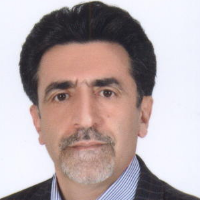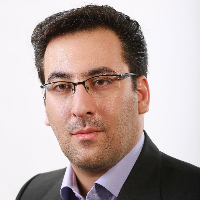Investigation on Stratification of Temperature and Dissolved Oxygen in a Large Dam Reservoir (Case study: Karun 3 Dam)
Author(s):
Article Type:
Research/Original Article (دارای رتبه معتبر)
Abstract:
Increasing the population and water demand for different uses and needs for accessing to the water resources with appropriate quality made the necessity to implement water quality management plans. Lack of attention to the quality of the released water from the dams can cause some problems and sometimes lead to irreversible damages on the environment. Therefore, the study of reservoir water quality, using field measurements or numerical modeling can be a key step in the operation of dam reservoirs. Nowadays, many models have been developed to simulate hydrodynamic and water quality of the water bodies. Among these models, CE-QUAL-W2, a two-dimensional width-averaged model, has been extensively used as a commercial model all around the world. Karun-3 dam is one of the double-arch concrete dams in the southwestern of Iran which was constructed on the Karun River, with 185 meters height, 462 meters crest length and 60 km lake length. The main goal of Karun-3 dam is to control the seasonal floods of Karun River, increase the potential of regulating water for drinking and agriculture uses, and also to produce hydropower. Considering the multiplicity of tools, features and structures used in the development of the model equations, the analytical methods and the quality conditions are needed for modeling and forecasting temperature changes in Karun 3 dam reservoir. In this study, the CE-QUAL-W2 model was selected for the thermal and chemical simulation. The required data to run the model can be divided into six categories: geometric data, initial conditions, boundary conditions, hydraulic parameters, kinetic parameters and calibration data. After inputting the bathymetry file, in a process of trial and error and by using the real elevation- area chart, the geometry of the reservoir was calibrated. Then the observed water surface level in the reservoir was compared with corresponding simulated water surface level data. After geometry and surface water calibration and making other input files, the quality stratification of the reservoir needed to be calibrated. Since this model included a large number of calibration coefficients and there is no standard guideline for this task, the model calibration is a time-consuming process. In this paper, first, the effective coefficients were identified by sensitivity analysis. Then, the calibration performed after classification of the coefficients. During sensitivity analysis of the different affecting parameters, it was found that wind sheltering coefficient in the region is more effective than other parameters. In the present study, the monthly data of Karun-3 dam reservoir measured from February until September of 2015 were used to construct the model. The results showed that this method was suitable for making accurate predictions of temperature stratification and reducing run time. The Absolute Mean Error (AME) for water surface elevation and bathymetry were obtained 0.74 m and 0.77m^3, respectively. Based on the obtained results, in the late February, the reservoir has full mixing and has a strong summer stratification that starts from April and peaked in mid-July. Afterwards by reducing the incoming radiation over the reservoir, stratification formed and goes into the mix. The water temperature in the reservoir was never less than 4 °C. Also, the considered reservoir is located in a tropical region and the temperature difference between Hypolimnion and Epilimnion was less than 1 °C in February; so the thermal stratification in the reservoir is not significant. Therefore, the reservoir can be considered full mixing during the winter. The trend of qualitative parameters also affected the thermal stratification. Variations of the dissolved oxygen also showed the decline of this parameter toward depth. So that in September the concentration of dissolved oxygen decreased from 7.07 to 4.37 milligram per liter. This decline intensifies in warmer water. So that the maximum amount of dissolved oxygen in Hypolimnion occurs in February and the lowest in September. Because the simulation process is not free of human error in sampling and analysis, full matching is impossible in this process. Therefore, equations in some cases have been simplified. The above mentioned limitations eventually are lead to differences between simulation and field data. The lowest values of root mean square error in the course of the simulation for temperature and dissolved oxygen were 4.82 °C and 1.73 milligram per liter, respectively, and for absolute mean error were obtained equal to 3.37 °C and 1.35 milligram per liter, respectively.
Language:
Persian
Published:
Iranian Water Research Journal, Volume:13 Issue: 32, 2019
Pages:
49 to 57
https://magiran.com/p1971914
دانلود و مطالعه متن این مقاله با یکی از روشهای زیر امکان پذیر است:
اشتراک شخصی
با عضویت و پرداخت آنلاین حق اشتراک یکساله به مبلغ 1,390,000ريال میتوانید 70 عنوان مطلب دانلود کنید!
اشتراک سازمانی
به کتابخانه دانشگاه یا محل کار خود پیشنهاد کنید تا اشتراک سازمانی این پایگاه را برای دسترسی نامحدود همه کاربران به متن مطالب تهیه نمایند!
توجه!
- حق عضویت دریافتی صرف حمایت از نشریات عضو و نگهداری، تکمیل و توسعه مگیران میشود.
- پرداخت حق اشتراک و دانلود مقالات اجازه بازنشر آن در سایر رسانههای چاپی و دیجیتال را به کاربر نمیدهد.
In order to view content subscription is required
Personal subscription
Subscribe magiran.com for 70 € euros via PayPal and download 70 articles during a year.
Organization subscription
Please contact us to subscribe your university or library for unlimited access!



